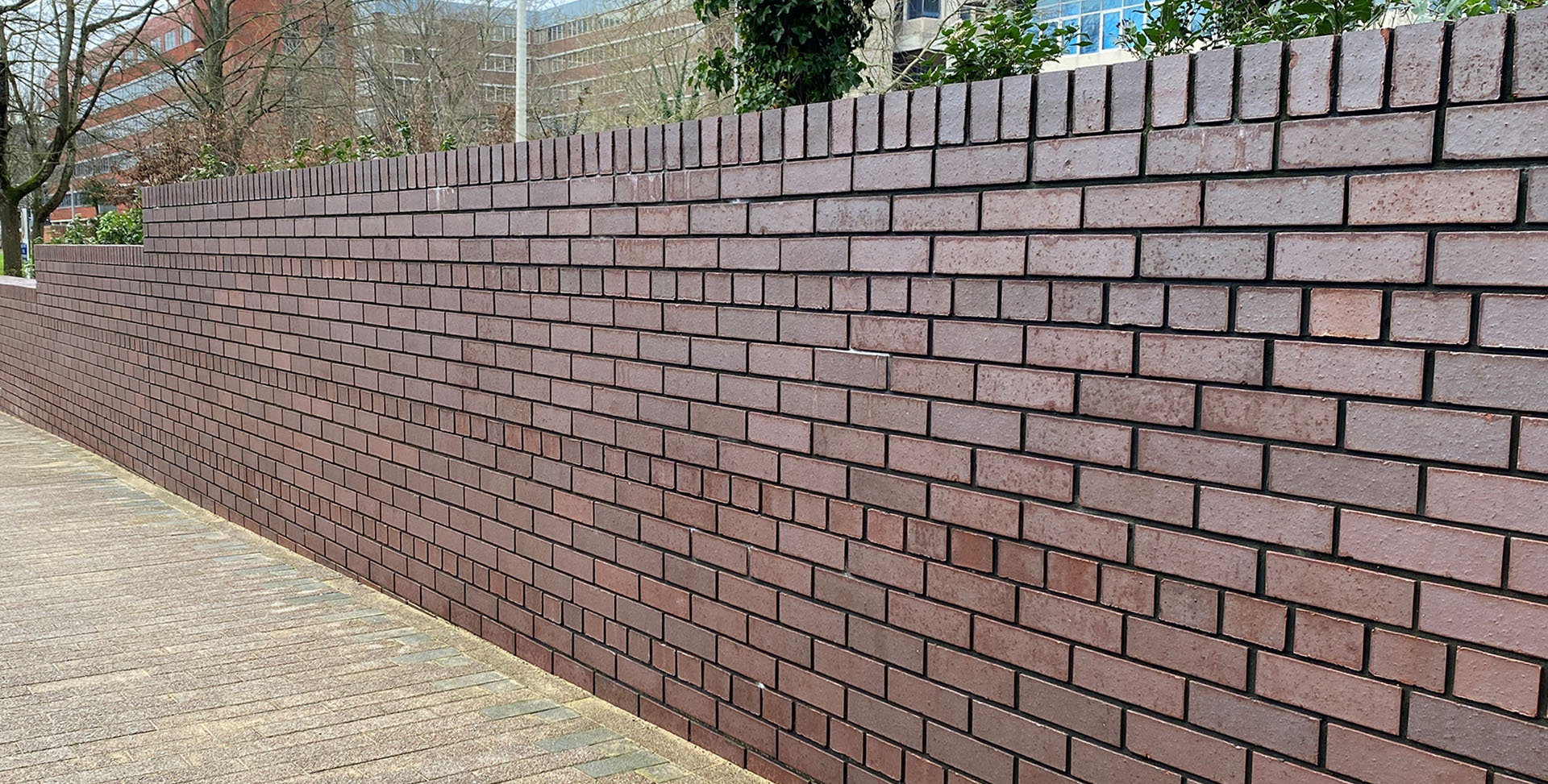Brick bonds

The brick bond that is used can effect the strength of the wall, and it will also have a dramatic effect on the aesthetics. Here are some of the most common brick bonds.
Stretcher bond
 A stretcher bond is one of the most common of all brick bonds. All bricks are laid as stretchers and it is economical as there is very little waste. It is used where the wall is half a brick in thickness, often cavity walls.
A stretcher bond is one of the most common of all brick bonds. All bricks are laid as stretchers and it is economical as there is very little waste. It is used where the wall is half a brick in thickness, often cavity walls.

Header bond
In a header bond all bricks are laid as headers. It works particularly well for curved walls. 

English bond
This bond uses alternate courses of stretchers and headers and it is a popular bond for traditional building. It produces a brick wall that is o ne full brick in depth, is easy to lay and is the strongest bond for a one-brick-thick wall and is therefore often used for civil engineering projects such as bridges.
ne full brick in depth, is easy to lay and is the strongest bond for a one-brick-thick wall and is therefore often used for civil engineering projects such as bridges.

Flemish bond
The flemish bond uses headers and stretchers alternately in a single course. The next course is laid so that the header lies in the centre of the s tretcher below. For a half brick thick cavity wall, snap headers can be used instead of full headers.
tretcher below. For a half brick thick cavity wall, snap headers can be used instead of full headers.

Stack bond
A stack bond can be either vertical or horizontal, either way the bricks are stacked on top of each other without any overlap so the joints run vertically down the wall. It is an inherently weak bond and is used for visual purposes rather than strength. Typically steel ladder reinforcement is built into every third bed joint.
run vertically down the wall. It is an inherently weak bond and is used for visual purposes rather than strength. Typically steel ladder reinforcement is built into every third bed joint.










